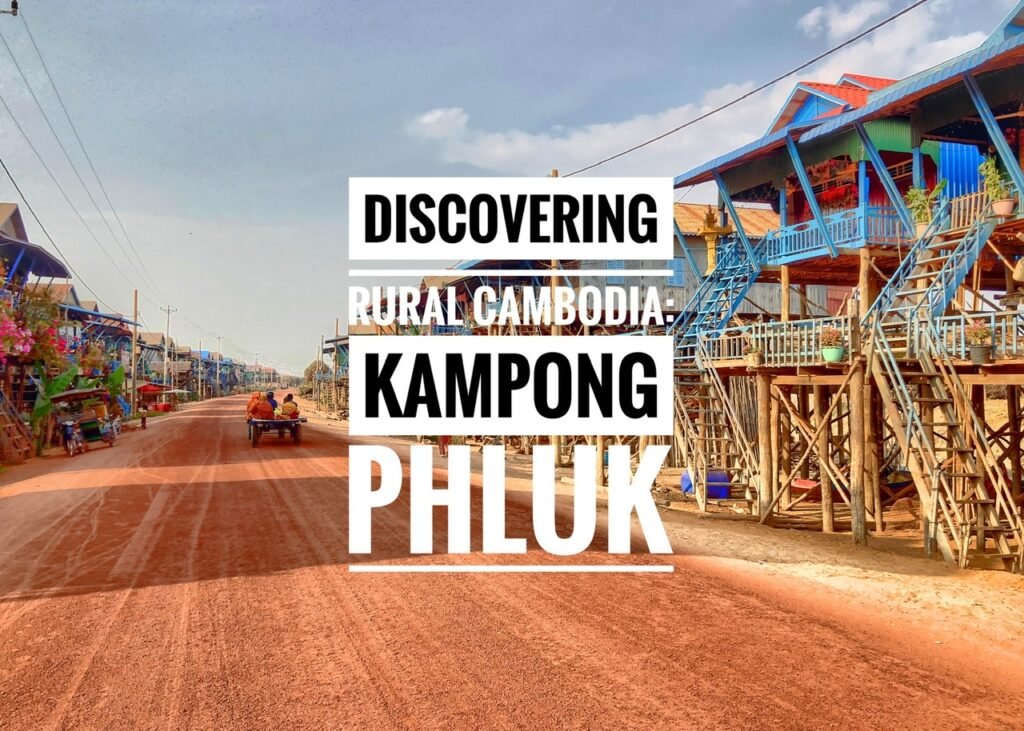
After a week in Siem Reap, we were ready to get off the grid and experience authentic village life in Cambodia. Our original plan had included heading to Kratie in central Cambodia to stay in the countryside for two weeks volunteering to teach English to village kids. Unfortunately, thanks to COVID, our plans got upended, so we opted instead to stay in a homestay near Kampong Phluk, which is one of many “floating villages” on the Tonle Sap lake. The Tonle Sap is the biggest freshwater lake in Southeast Asia.

As we headed into the country, traditional Khmer-style houses became abundant. They are on stilts because they traditionally kept livestock underneath them, although this practice is less common now. It also offers protection from high waters during monsoon season. Many simple homes include only one room which serve as a living and sleeping area. The kitchen is typically outside, as well as the toilet.
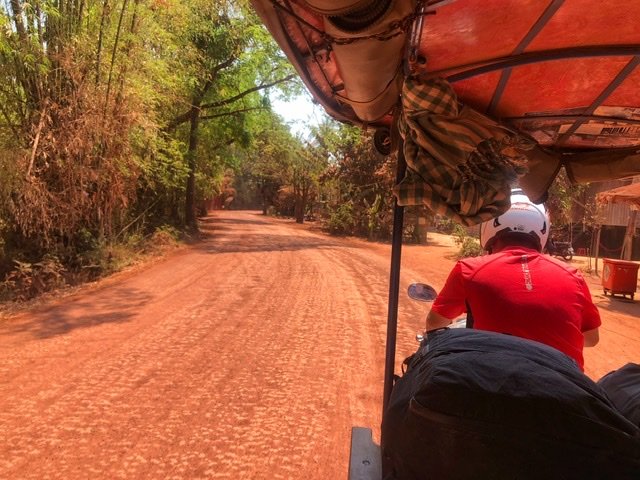
The tuk tuk ride to the village was long and dusty.
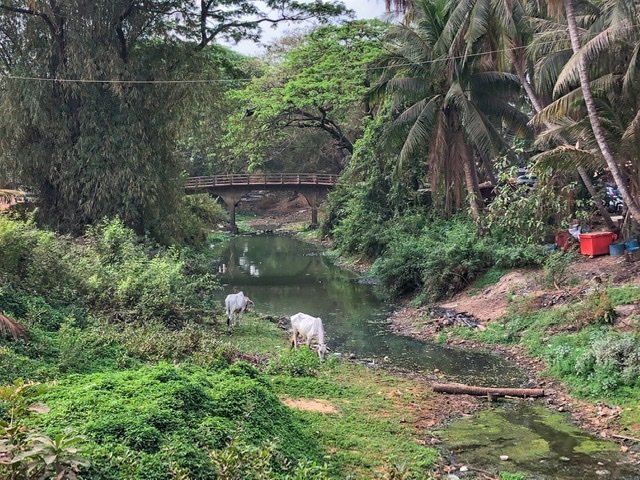
As we got further out, parts of the drive felt more like India than what we’d experienced in Cambodia so far.
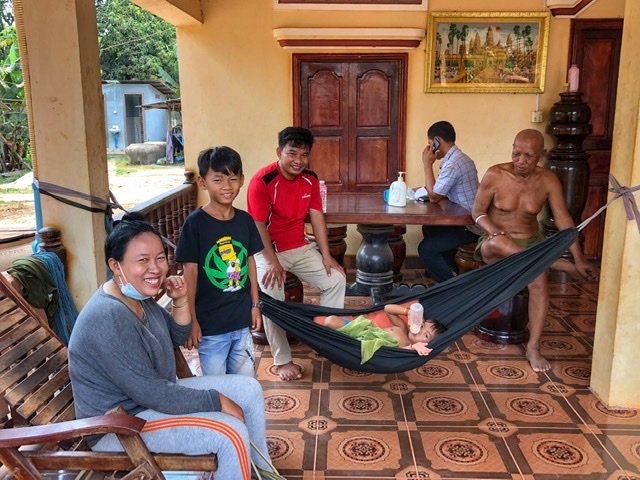
Our Homestay family was incredibly kind, cheery and welcoming. Lam, the one in red was our primary translator and contact. His nephew, the one the Bart Simpson marijuana t-shirt (ha!), also spoke some basic English. Although this picture isn’t a good indicator, we loved the grandpa who just never stopped smiling, and was trying his best to engage with us despite the language barriers. We only wished we could have had a conversation with him. I’m sure he had lots of stories to tell.
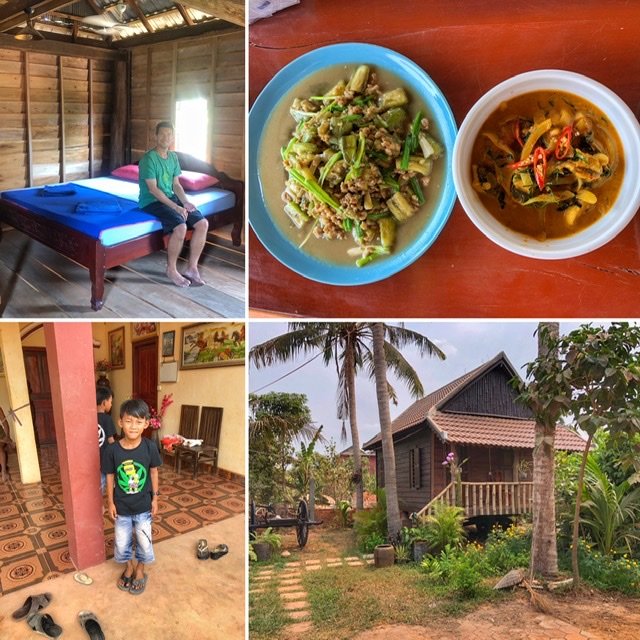
Truth be told, the homestay ($15/night) was not an all around easy experience for us, If for no other reason than the stifling 100+ degree heat we had to endure with no air conditioning in sight. It was here we vowed never to book a place without A/C again in this kind of heat and humidity.
- Our room was wonderfully traditional, built in a Khmer-style hut with wood slat floor, open windows and a couple of fans. We had a firm but quite comfortable bed, and a mosquito net, but despite the fans, it felt like being in an oven.
- One of several meals made for us by Lam’s wife. Very tasty, and an excellent cook!
- Lam’s nephew
- The outside of our little home
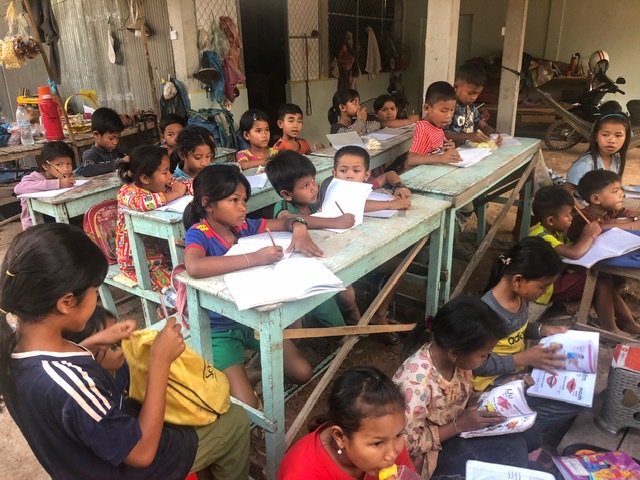
We got the honor of visiting the local primary school, which was a nice opportunity since we didn’t get to do our volunteer work. All the kids were between the ages of 6-12, and their lessons were conducted outside under an awning. We only wish we’d been more aware that we would be visiting so we could’ve brought some supplies.
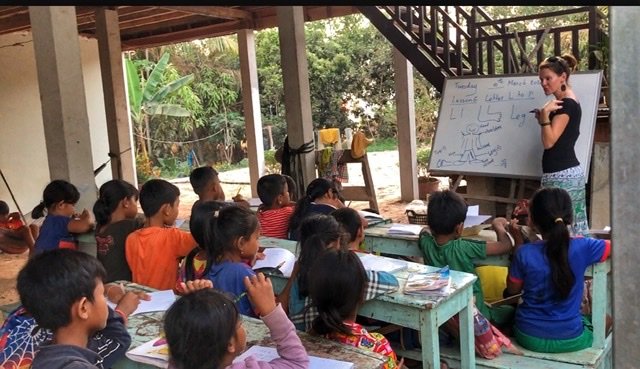
And surprise, surprise, our visit was conveniently timed just in time for English class. And guess who guest taught? Today’s lesson… the letter “L” ,the United States, and colors. Mandy took the reigns and asked the class to guess where she was from. These sweet, innocent children answered, “China”, “Korea” , and “French!” It was so refreshing (and bizarre) to be amongst children who knew so little about the huge world beyond their borders, and where the newest gadget or celebrity from the USA isn’t even a blip on their radar. It’s something we’ve never experienced amongst kids anywhere. They almost always know something about the States.
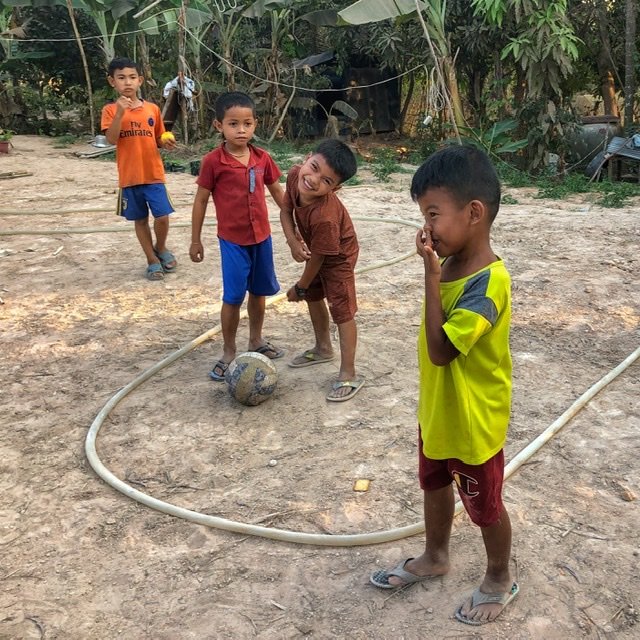
Some of the kids playing football (among other things) before class.
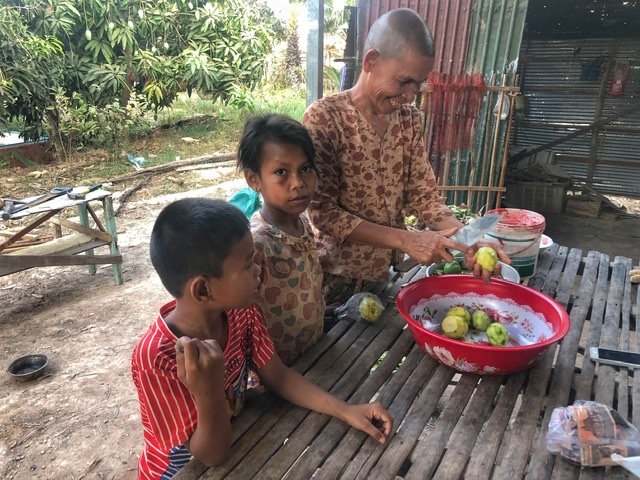
The girls help gather and peel green mangos from the property with their teachers. Many people (including women) have shaved heads as a sign of great respect for Buddha.

And when it’s not mangoes, it’s the colossus jackfruits.
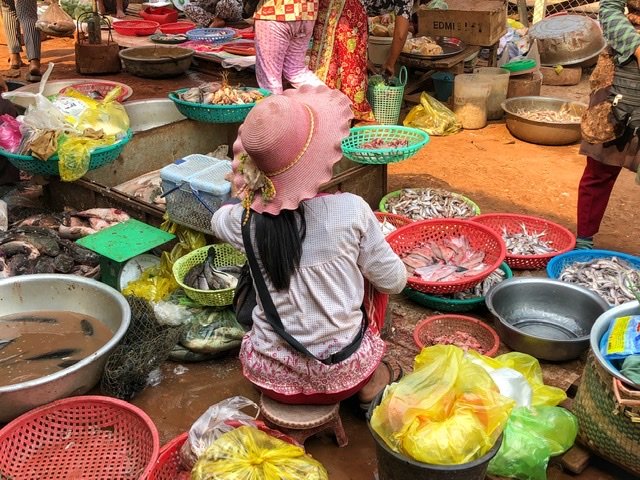
Our host kindly tuk tuk-ed us to local market one morning for a tour which was about 20 minutes away, in the village of Rolous. Fish are brought in from the Tonle Sap lake each morning. Many fish are kept alive until sold and gruesomely gutted after being purchased to ensure maximum freshness. This vendor seems to offer mostly small dried fish and seafood options making her job far less messy than some of her coworkers.
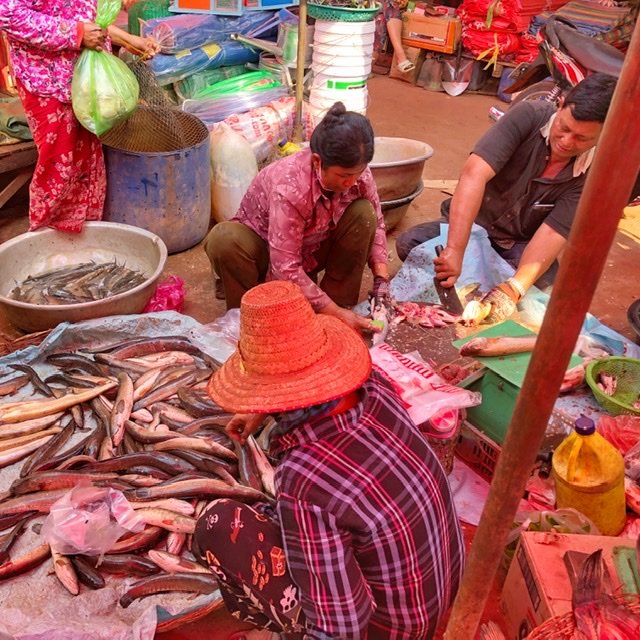
Piles of fish awaiting their final destiny.
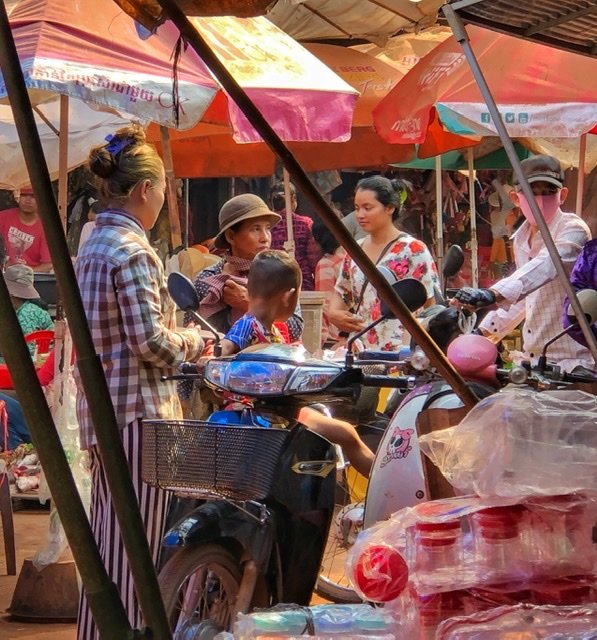
Pretty sure this one isn’t quite old enough to drive.
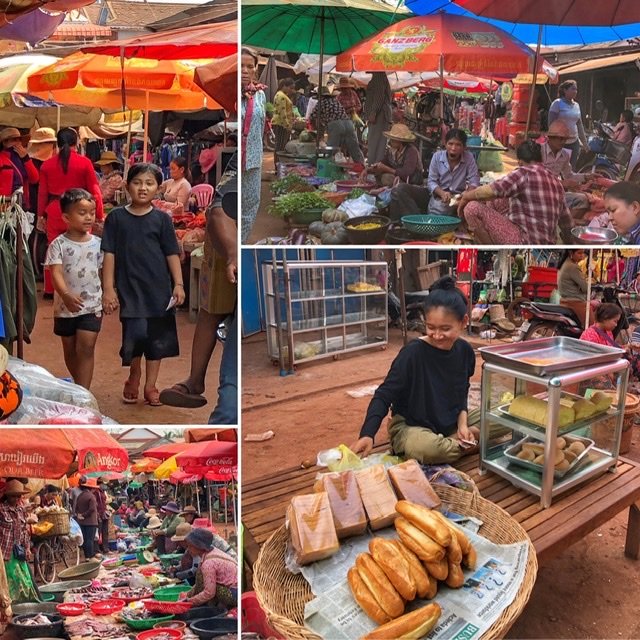
- Spotted these two boys holding hands. So cute
- And caught this lady in a yawn
- Buzzing with activity
- Mmmm…baguettes ?
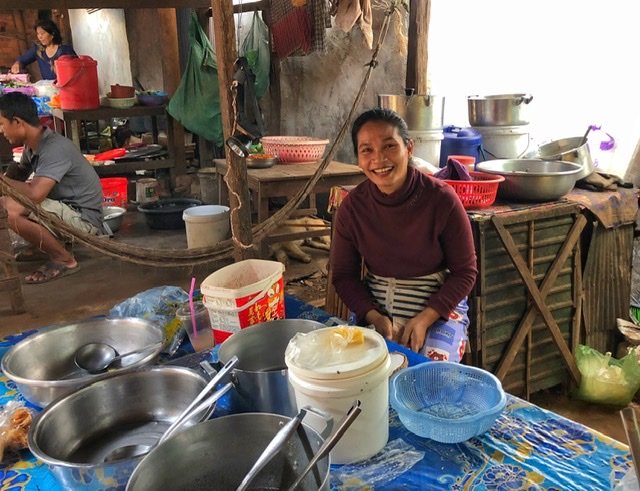
No shortages of happy smiles here!
Errr…take that back. But if we were nine and doing that work, we probably wouldn’t be smiling either ?
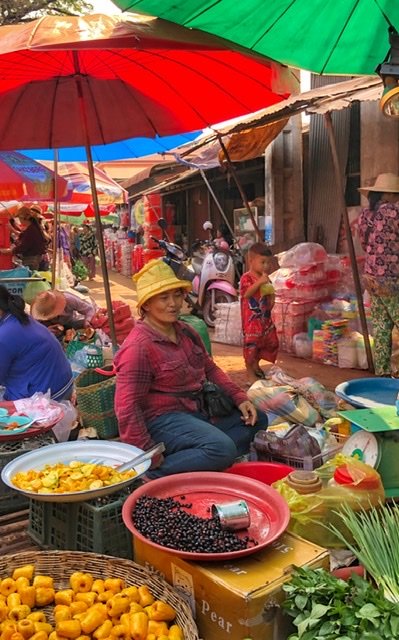
Sometimes they even slice the jackfruits for you!
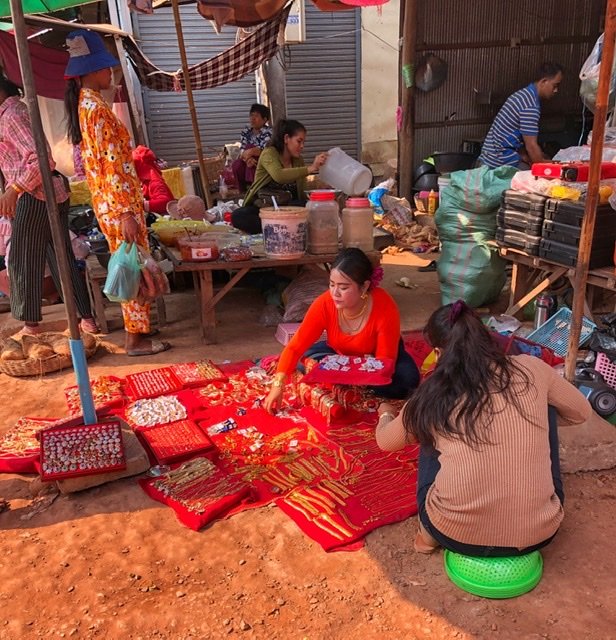
Or, if you’re in the market for some bling…?
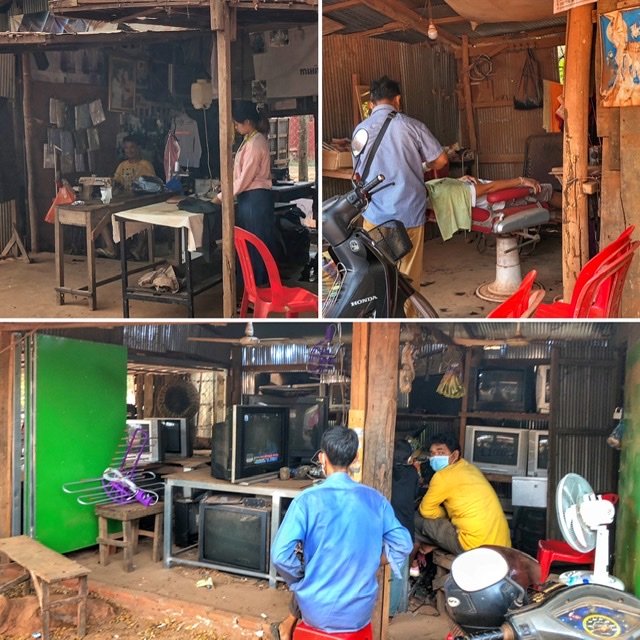
Some of the local businesses:
- A tailor
- A barber
- An electronics store. So this is where our TVs go…

The incredible edible Lotus flower stems and seeds piled carefully in a basket. The seeds (the little black dots) are the edible part. It’s simple to tear open the sidewalls of the pod to get them out. Once inside, they reveal a small white seed about the size of a large blueberry. You can pop them in your mouth raw, which releases a waxy, squeaky watery edible seed. Not very flavorful. They taste a little like peas and can also be cooked which is more common. Lotus seeds are eaten all over Asia.
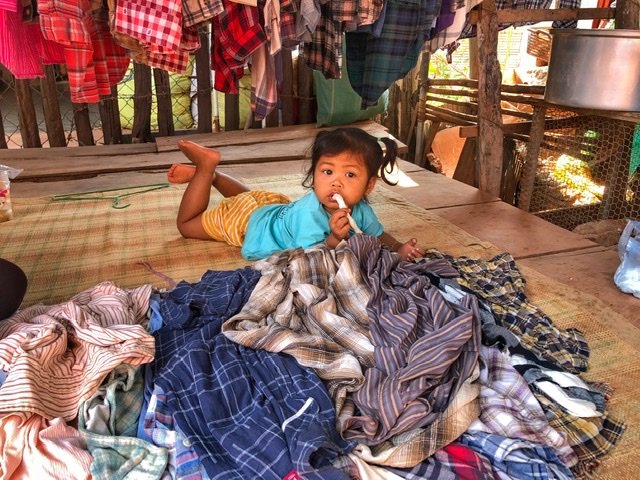
This little cutie assists her mom with some sales.
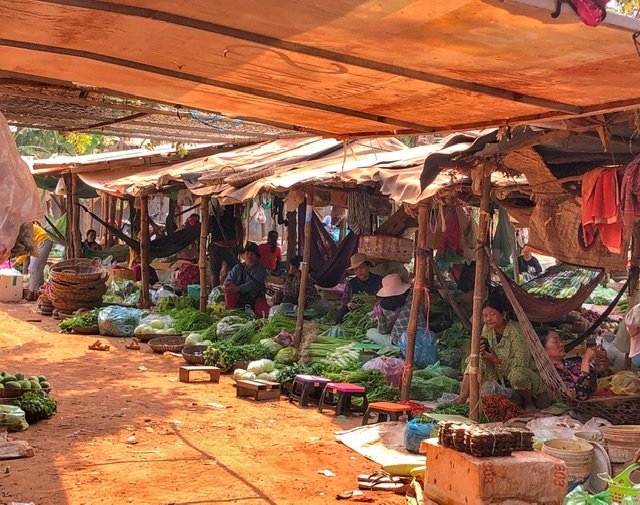
A group of vegetable sellers offer a lovely green selection.

Hundreds of seasoned clams ready for roasting!
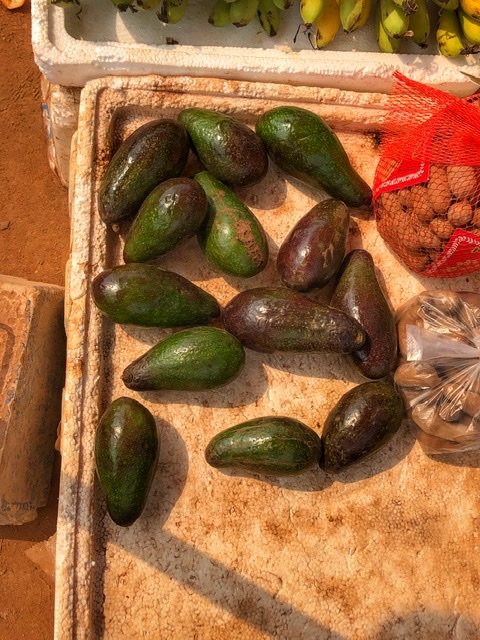
Mmmm. Avocados for $1! Still expensive. Even here!

The street scene in Rolous.
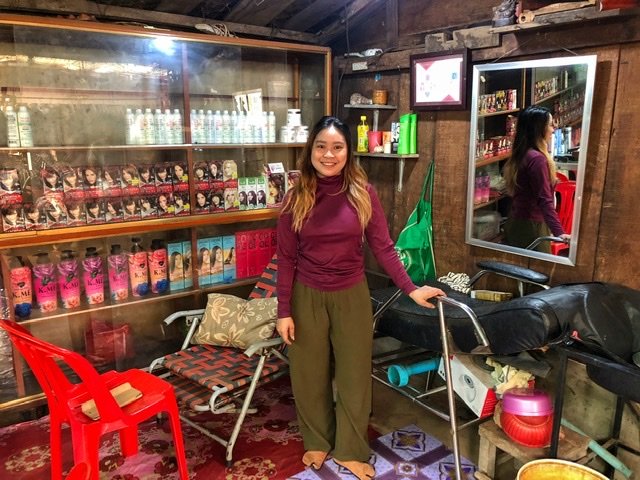
Mandy has been looking for blonde hair dye since we left Turkey in August and this tiny village salon in rural Cambodia has been the first place we’ve found it. L’Oreal. $5! Score!
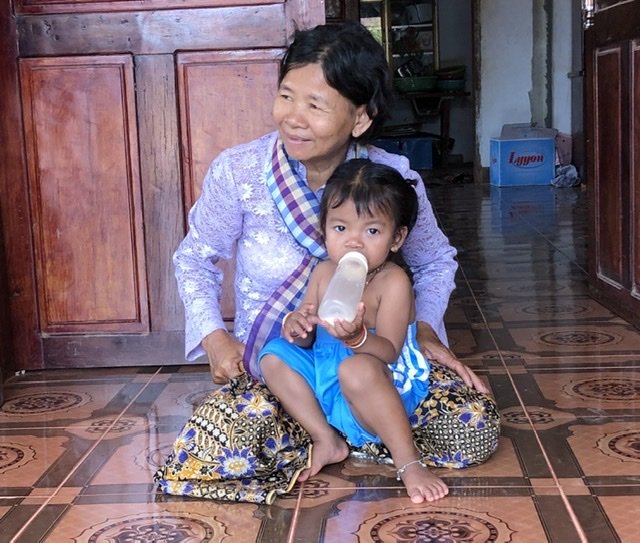
Back at the homestay we hang out with the family. Nana and her grand baby. Not sure who is cuter?!
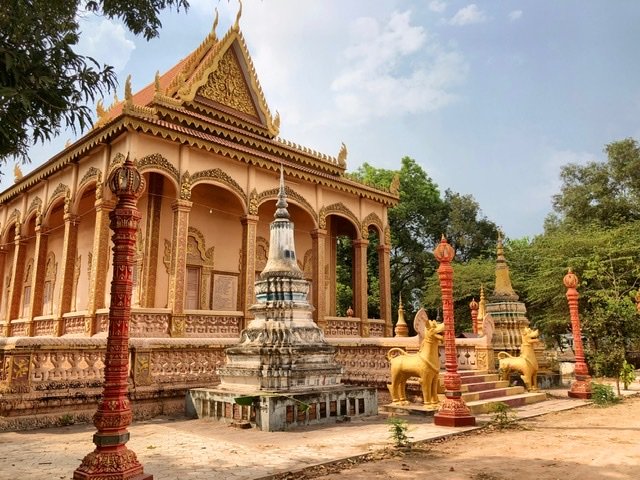
It doesn’t matter how small the village is, you’ll always find a temple.
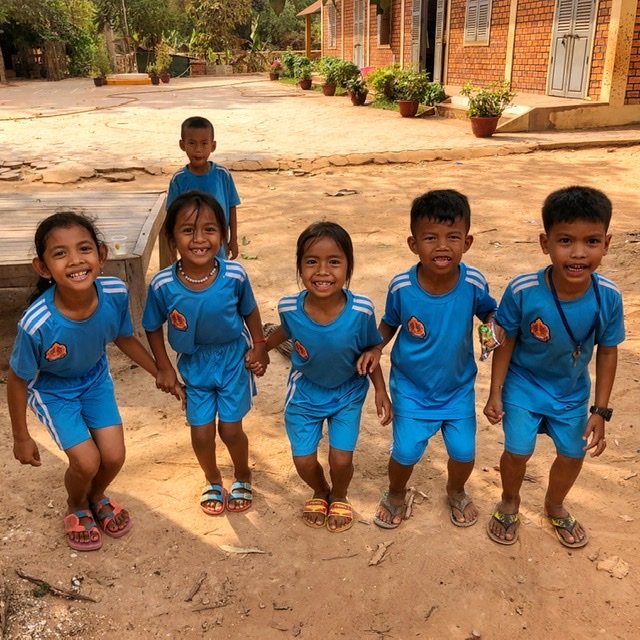
And looked who we bumped into?! Some of the village kids from “Mandy’s class” who were more than ready to ham it up for us!
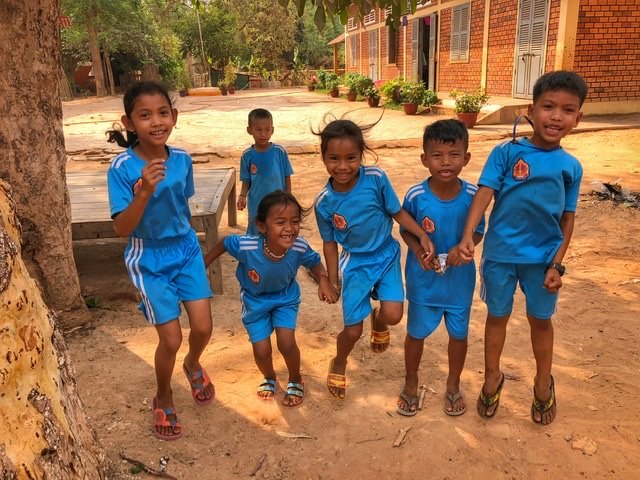
1…2…3…jump!!
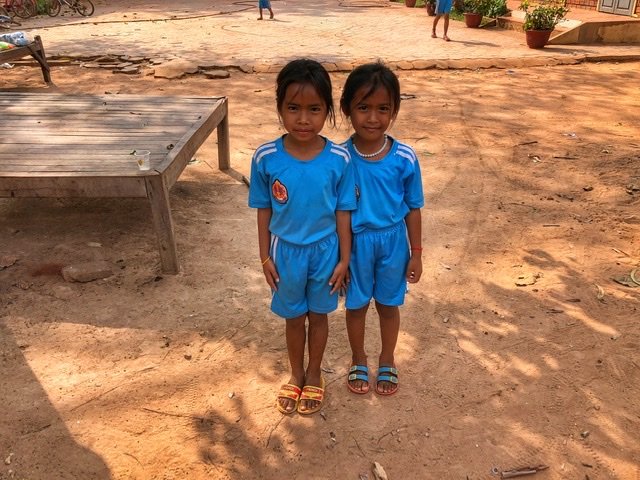
Just the girls.
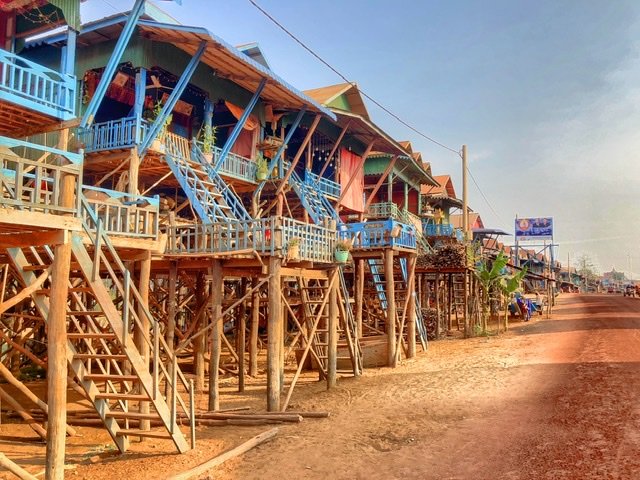
The villages of Tonle Sap lake are like stepping into a different world. Arriving in the nearby “floating village” of Kampong Phluk. Your first obvious observation may well be…”but there’s no water!” Ah, yes. Good eye! ? This is because in the dry season, (which is now through the end of April) the water recedes. In monsoon season, the water can rise up to 14 meters, to the bottom of the first level of the houses so there are no longer roads, but waterways.
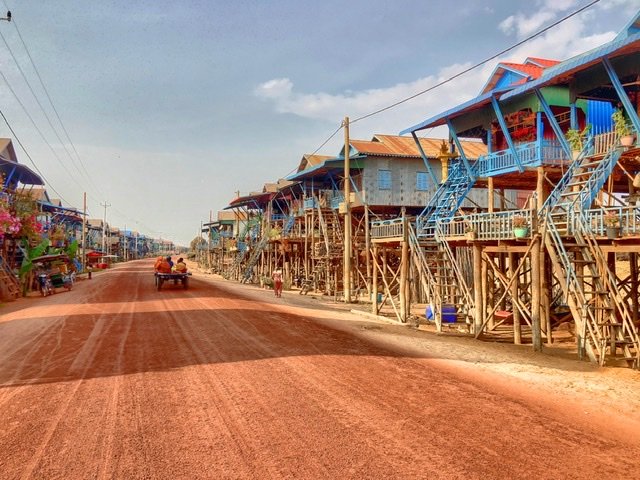
Because the roads are submerged for typically half a year, they are in horrible condition. Getting out there on our tuk tuk was certainly and rock and roll kind of experience.
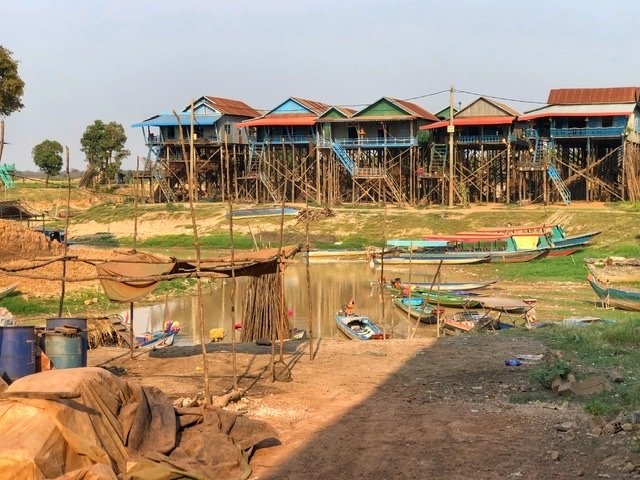
Hard to imagine all of this under water and think about how it affects the people living here, but these villages have been here for hundreds of years.
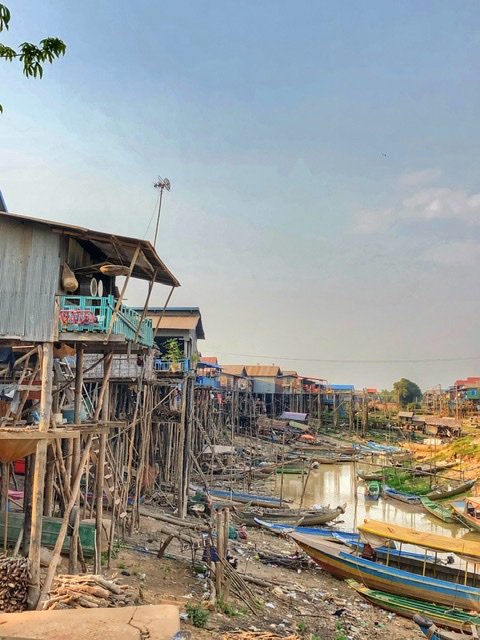
The tiny snake of the river certainly doesn’t seem so daunting now. This river connects with the Tonle Sap lake itself which is about 2 km from the village. Unfortunately we didn’t get to see the lake. You couldn’t reach it by Tuk tuk and the boat price to get there was still a ridiculous $15/person so we passed.
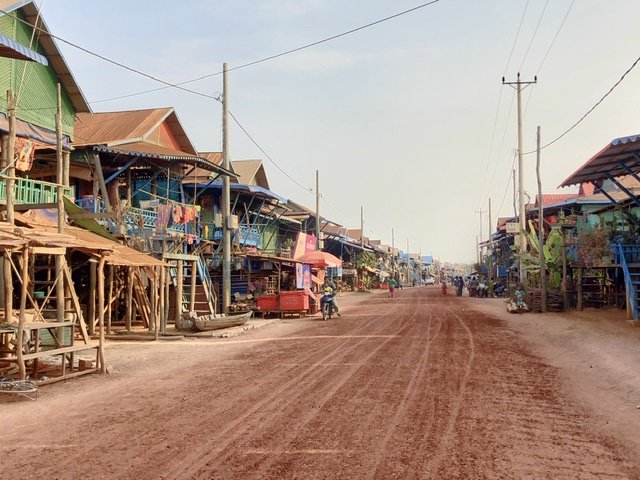
Another shot of the village. Amazingly this village only got electricity in 2014. Before then it was all powered by generators.
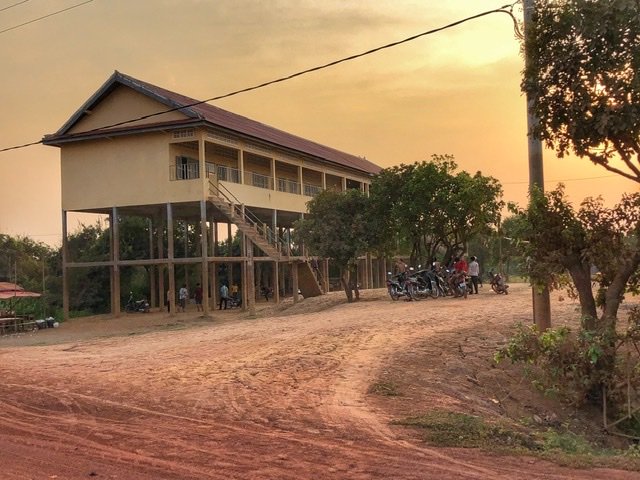
The local high school. Can you imagine taking a boat to school everyday?! It’s a simple, but probably hard life.

The river is lined with the cutest colorful boats used during wet season. Most of the boats are for locals, others are used for tourists which are very prevalent during monsoon season.
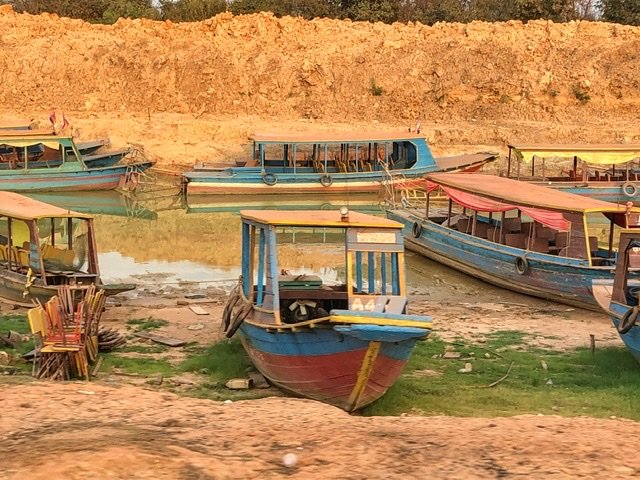
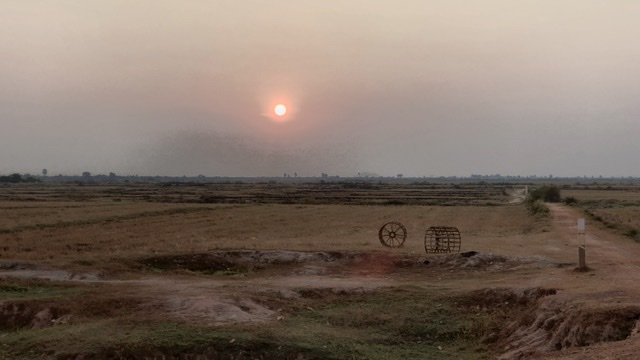


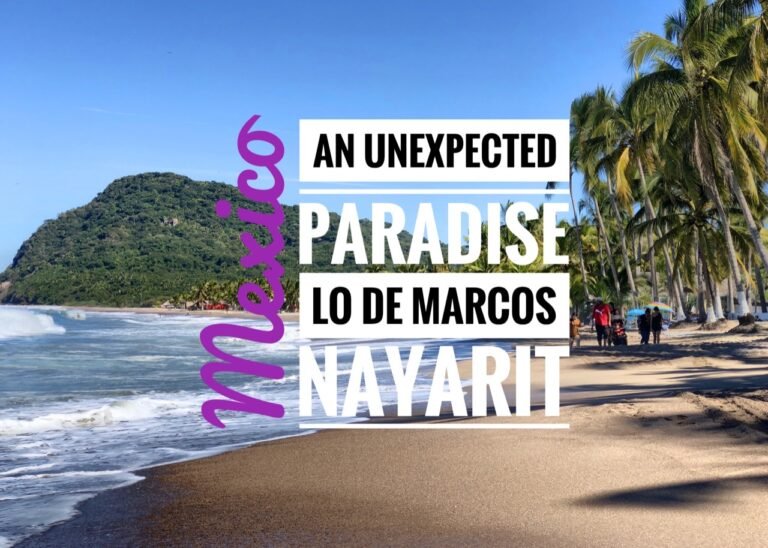
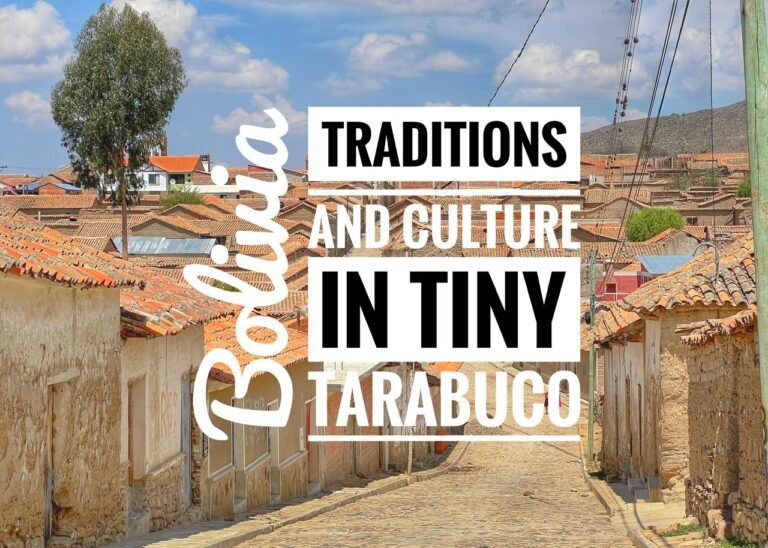
Discovered this today, March 2022, I am a bit sad to read that you are going only to place with AC. I think many lovely beautiful places are ruined by all the AC we demand. I feel we are so spoiled. We want to experience the “real life” of another place, but then demand the comfort of our homes.
Thanks for your comment. You are right that our society, particular as Americans, we are very spoiled by A/C, although we didn’t have it for 10 years in Portland, Oregon where temperatures are getting hotter and hotter. While in Cambodia, it was definitely our preference while living there 3 months at the start of the pandemic during the hottest months. However, it is definitely not our preference to “only visit places with A/C.” We have spent a lot of time in very hot places and have adapted fine, but it was definitely a struggle on Kampong Phluk where there were no fans or cross-breeze either.
Thank you very much for the photos and explanation. I was there 15 days ago. There was the best tour I have. I loved the places very much.
Glad to hear you enjoyed it!! Thanks for reading!